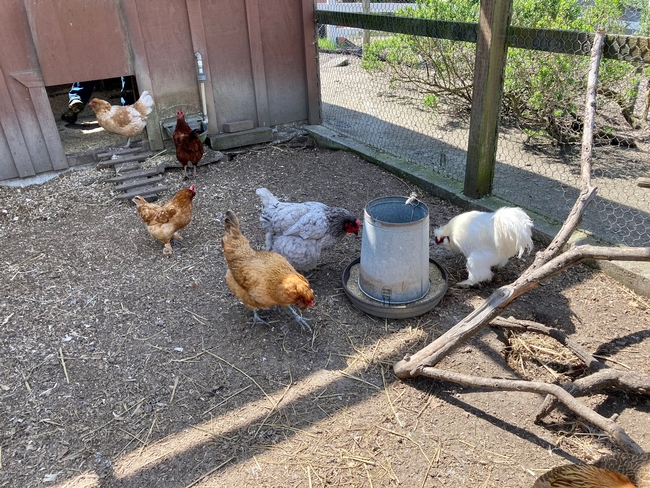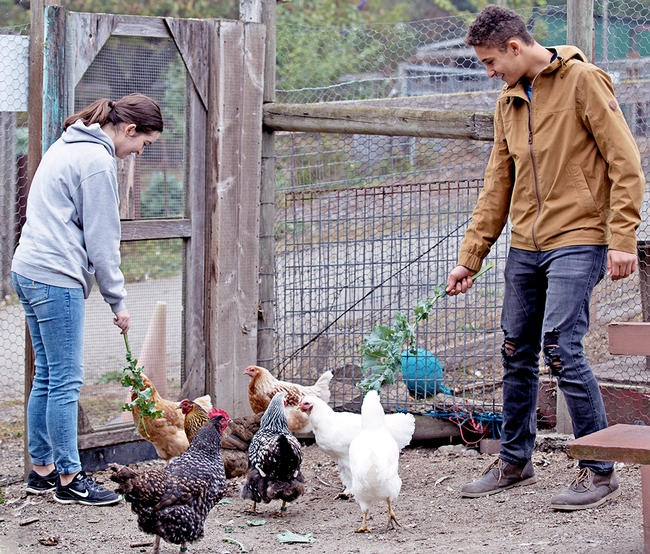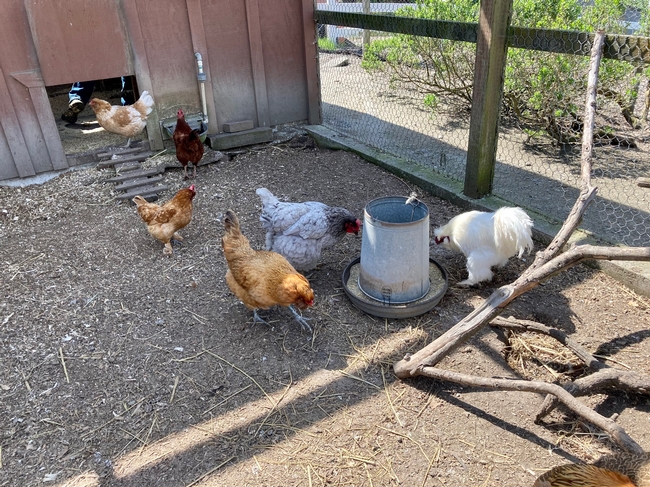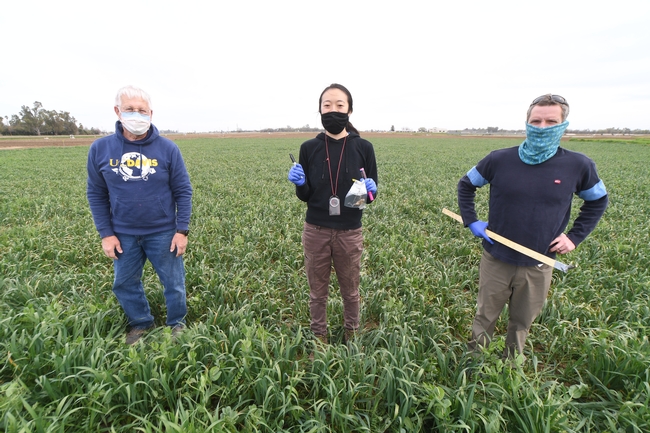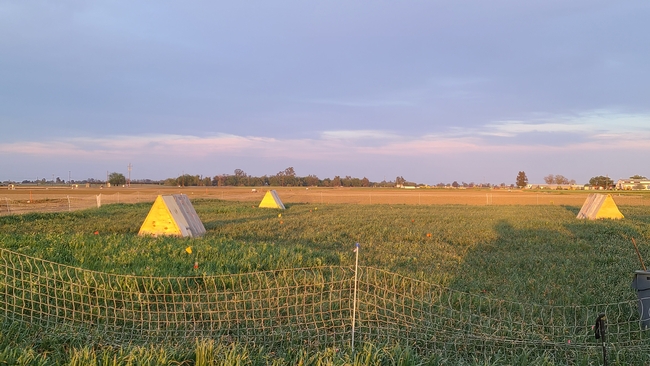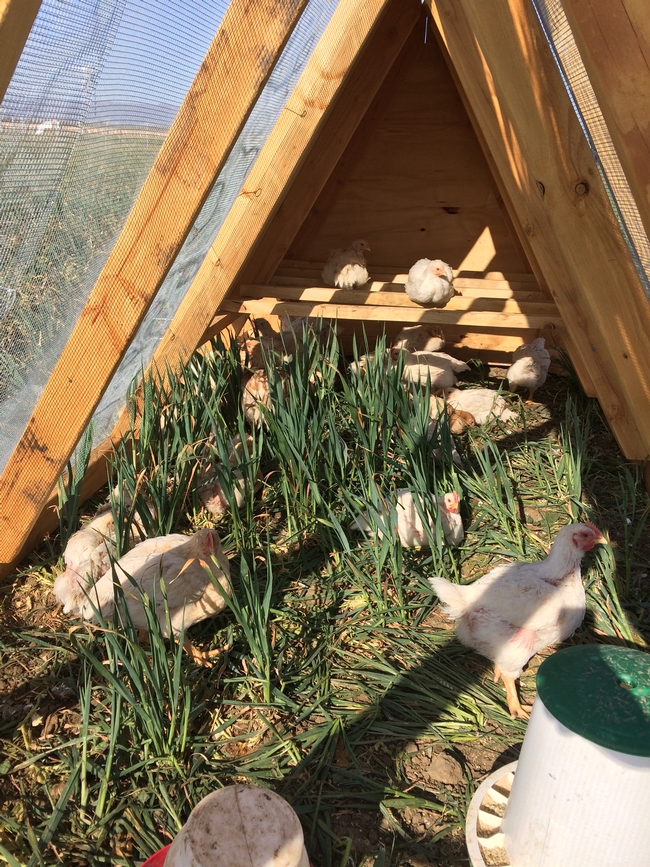
Posts Tagged: chickens
Chicken community ‘coop-eration’ needed to test UC poultry health app
If you raise backyard chickens or breed game fowl, UC Cooperative Extension has an app for you. The new mobile app offers information for raising healthy chickens.
To test the usefulness of the UC Community Chicken app to people raising chickens, the Poultry Lab at the UC Davis School of Veterinary Medicine will pay poultry owners to participate in a two-week study with a follow-up survey three months later. 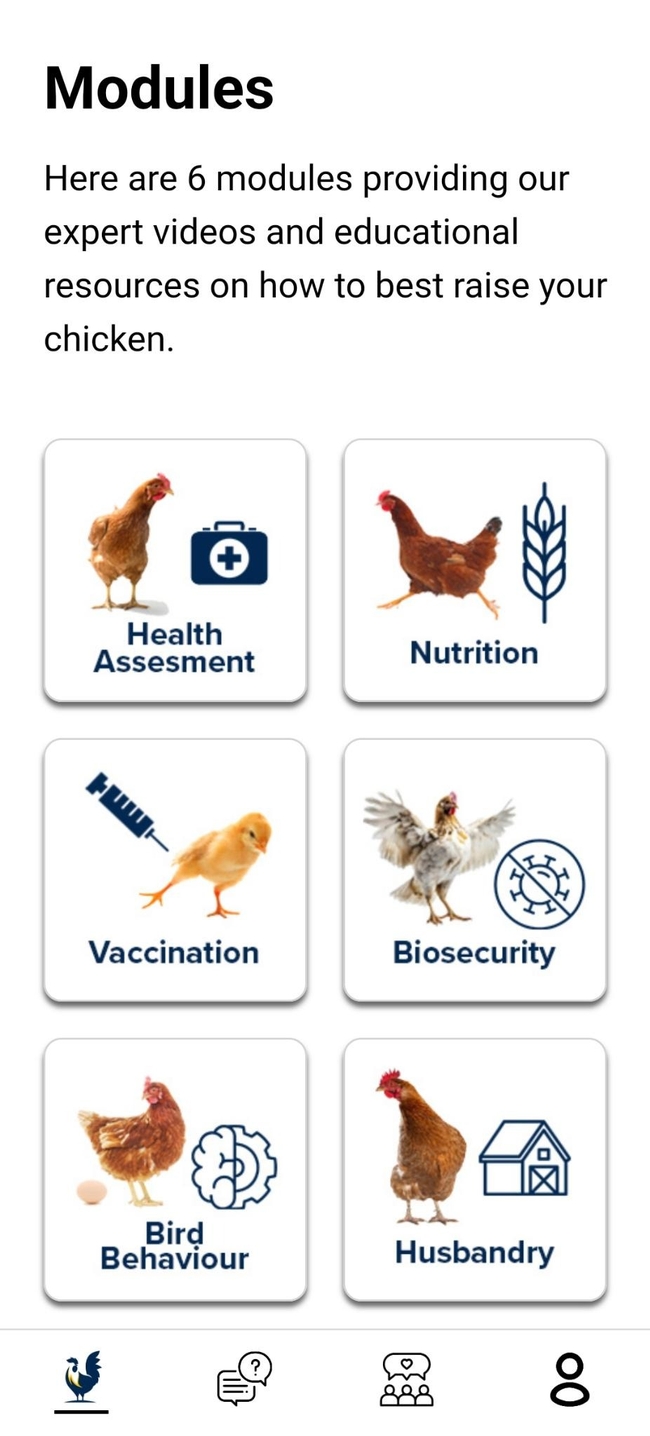
“Our study focuses on the development and evaluation of a new mobile app for backyard chicken owners and game fowl breeders,” said Maurice Pitesky, UC Davis School of Veterinary Medicine associate professor of Cooperative Extension. “The goal is to examine the app's effectiveness as a communication tool within the poultry community.”
To be eligible, participants must be backyard chicken owners who are 13 years or older or game fowl breeders over 18 years of age. They will need to have Apple or Android phones or tablets to access the app.
What's in the app?
The UC Community Chicken app contains six educational modules with short videos that cover health assessment, nutrition, vaccination, biosecurity, bird behavior and husbandry. It also features chat and feedback buttons so participants can communicate with the UC experts and other poultry owners.
“We value the thoughts and experiences of people who are raising poultry,” said Myrna Cadena, Ph.D. student in Pitesky's lab. “Their input will be valuable in shaping the way we extend information about poultry health.”
Study timeline
For two weeks, participants will explore the educational resources and other features and complete the surveys. Three months later, the researchers will follow up with a survey to assess the chicken owners' progress.
Participants who complete the entire study and follow-up survey will receive a $25 Amazon gift card via email. Those who do not finish the entire study will be compensated based on their level of participation. The study will be limited to 220 participants.
To register for the study, go to https://bit.ly/UCchickenapp. Once the study is ready, participants will be notified via email. The UC Community Chicken app will be available to the public after the study is complete. For more information about the study, contact Maurice Pitesky at drcluck@ucdavis.edu.
Bird owners urged to take precautions for avian flu
The highly contagious avian flu is being spread primarily by migratory birds, putting game birds, and backyard and commercial poultry at risk.
“Poultry owners should take precautions to prevent their birds from contacting waterfowl or the habitat that waterfowl frequent because this strain of avian influenza is highly contagious,” said Maurice Pitesky, UC Davis School of Veterinary Medicine associate professor of Cooperative Extension.
Infected waterfowl shed the highly pathogenic avian influenza virus in their feces and respiratory secretions, where the virus can remain viable for months in the environment.
“If you can't confine your birds in a coop, focus on good sanitation and reducing contact with waterfowl and their habitat such as agricultural fields and ponds,” he said.
Pitesky urges commercial and backyard chicken owners to monitor their birds for the following symptoms:
- Reduced egg production
- Trouble breathing
- Clear, runny discharge from nose, mouth and eyes
- Lethargy or lack of energy
- Loss of appetite
- Drinking less
- Swollen eyes, head, wattles or combs
- Discolored or bruised comb, wattles or legs
- Sudden death
To prevent exposure to potentially infected waterfowl, Pitesky suggests reassessing and redoubling biosecurity efforts to prevent contact between wild animals and domestic poultry.
Specifically, he recommends keeping birds away from ponds and other open water where they may contact waterfowl, which are the primary reservoir of the disease. To prevent cross-contamination, use clothing and boots that stay on your property and avoid sharing equipment with other bird owners.
A local veterinarian or UC Cooperative Extension farm advisor may have more suggestions to reduce risk.
For more information about protecting birds from avian influenza, visit https://ucanr.edu/sites/poultry/files/225352.pdf.
Unusual or suspicious sick or dead domestic birds should be reported to the California Department of Food and Agriculture Sick Bird Hotline at (866) 922-2473.
Suspicious wild bird deaths can be reported to California Department of Fish and Wildlife (CDFW) at https://wildlife.ca.gov/Conservation/Laboratories/Wildlife-Health/Monitoring/Mortality-Report.
Chicken owners invited to take survey guiding disease prevention
Californians who raise chickens and game fowl are invited to participate in a study to help the University of California more effectively deliver poultry health information and prevent the spread of diseases such as avian influenza.
Myrna Cadena, a Ph.D. student working with Maurice Pitesky, UC Cooperative Extension poultry specialist at UC Davis School of Veterinary Medicine, is leading a study with the Backyard Chickens and Game Fowl survey: https://bit.ly/3rWYpOa.
“Knowing how live birds are moved in California will be crucial in the event of a poultry disease outbreak,” Cadena said. “For example, if we know which counties have a large number of chickens coming in and out, then we can focus resources in those areas. The data collected could help us determine where to hold biosecurity workshops or distribute poultry vaccines.”
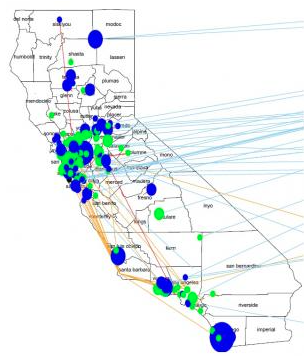
The survey takes 10 to 15 minutes to complete and includes questions about the flock; biosecurity practices; buying, selling and trading birds; and movement of birds for shows and fairs.
“We are university researchers, not a regulatory agency, so we are focused on outreach and education, not regulation and enforcement,” said Pitesky, who encourages owners of small-scale poultry operations to contribute to the research project.
To participate in this voluntary study about backyard chickens and game fowl in California, please fill out the survey at https://bit.ly/3rWYpOa by Sept. 30.
If you have any questions or comments, please contact the researchers at mepitesky@ucdavis.edu or mmcadena@ucdavis.edu.
Also, check out the video series, The Sitch, where Pitesky breaks down the basics of beginning a poultry farm and raising a backyard chicken flock: https://www.youtube.com/channel/UCP_1xWyE9U3JxjpsL9W-Crg.
Scientists to see whether chickens boost soil health, increase profits on organic vegetable farms
Historically, chickens were not a rare sight on farms, where they contributed to soil fertility as they freely pecked and scratched around vegetable gardens and crop land. Now, UC Cooperative Extension specialists have launched a research project to quantify the potential for chickens to be part of safe and sustainable commercial organic vegetable production.
“It's not a new idea. A lot of farmers are trying this kind of thing,” said UC Davis International Agriculture and Development graduate student Faye Duan, the project coordinator. “But there is currently little scientific information for using chickens on a bigger scale, especially in terms of food safety concerns.”
The California trial is part of a national effort to diversify organic vegetable farms with chickens. Last year, the USDA-funded study was launched by Iowa State University horticulture professor Ajay Nair. The project also includes UC Cooperative Extension specialists Maurice Pitesky and Jeff Mitchell, based at UC Davis, and University of Kentucky entomology professor David Gonthier.
In the trials, chickens are introduced as part of a rotation that includes cover crops and a variety of vegetable crops. In California, chickens were placed on research plots in April following a winter cover crop of vetch, peas, fava beans and oat grass.
“We don't let the chickens run around the field,” Duan said. “We keep them inside of chicken tractors to protect them from predators.”
Twenty-nine birds live in each 50-square-foot tractor, essentially a floorless chicken coop on wheels. The tractors, built by UC Davis students Mallory Phillips and Trevor Krivens, are wood frames covered with mesh and plywood. Each day, the tractors are moved to a different part of the plot, where the birds can graze on cover crop residue and deposit manure. Adjusting to the daily move took time, Duan said.
“The first day, the chickens were confused. We had to go slowly. It's a learning process for the chickens and us,” she said. “But now, the chickens are excited to move to a new spot where they have fresh food to graze on.”
After 24 days on pasture, the chickens will be removed, and become part of the project's meat study.
“We have broiler chickens that are raised for meat,” Duan said. “Some people believe chickens that graze and eat grass taste better and are more nutritious. It will be part of the study to look at the chicken's meat quality.”
Once the chickens have done their part on the research plots, vegetables are planted amid the leftover cover crop residue and chicken manure. This summer, the experiment in California will grow processing tomatoes. Subsequently, melons, eggplant, spinach and broccoli will be part of the vegetable rotation in California or the other states involved in the project. Other replications of the trial will have the chickens immediately follow the vegetable harvest so they can graze on the crop leftovers before the cover crop is planted. Comparing the soil health, fertilizer needs, chicken quality and other factors will help the scientists optimize the rotation.
“Vegetable yield will be an important indicator of success,” Duan said.
Soil samples will be tested to determine the presence or absence of Salmonella bacteria after the chickens have been removed, said Pitesky, a poultry specialist and a project lead. Salmonella is a bacterium that can be part of poultry's microbiome. If the bacteria contaminates human food, it can cause illness.
“Since Salmonella lives in the chicken gastrointestinal system, when it gets into the soil, it will eventually be out-competed by bacteria more adapted to soil than the gut of a chicken,” Pitesky said. “There are many different types of Salmonella, and only a select few found in birds are the ones that are harmful to humans. Nevertheless, it is very important to test and use various practices to mitigate the presence of Salmonella on land that will be used for crop production following poultry.”
Early results of soil tests in Iowa and Kentucky detected Salmonella in the soil where chickens grazed, however, the bacteria disappeared very quickly.
Backyard livestock and peri-urban agriculture
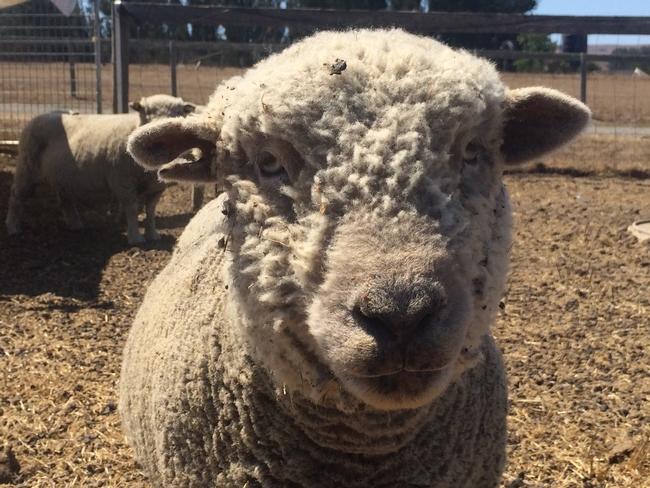
How I can keep my animals healthy? The first step to maintaining healthy animals is to practice good biosecurity and hygiene practices. This includes purchasing new animals from certified sources and knowing the herd/ flock status of the sources and health status. Another important practice the separation of the new animals and your current ones, there would ideally be a 14-30 day isolation period to prevent the transmission of diseases between resident animals and new animals. It is recommended to make sure livestock have regular vaccinations, routine veterinary care, and are closely monitored by owners for signs of illness. If signs of illness are detected, the separation of healthy animals from sick animals is crucial in stopping the further spread of diseases.
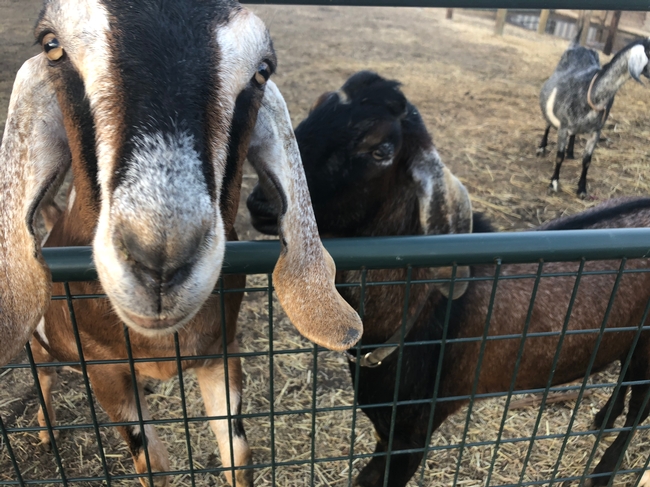
What practices can improve on small-scale and backyard livestock and poultry? In a recent study (Pires et al, 2019) in four western states in the US, 83.8% of small-scale and backyard livestock and poultry owners reported that they isolated sick animals from healthy ones and 76.6% kept newly purchased animals in quarantine. Other biosecurity practices were reported at a lower rate, such as the quarantine of returning (e.g., from fairs, shows) animals (49%), rodent/pest control (57.3%), wearing dedicated clothes when handling sick animals (49.5%), avoiding livestock contact with wildlife (50.7%) or limiting visitors (22.5%) (Pires et al, 2018).
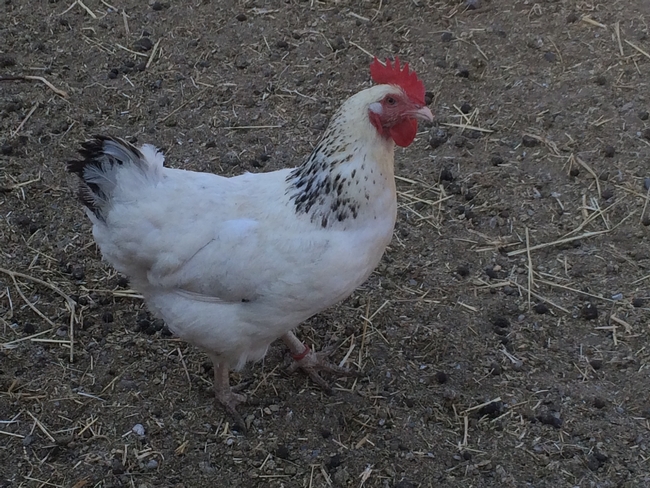
Summary. Backyard livestock and poultry owners should do their best to prevent contamination and disease spread. Purchasing the animals from reputable sources, maintaining a clean space for the animals, separating sick from health animals and proper sanitation efforts all play a collaborative part in the prevention of diseases and promotion of animal health and public health. Many sources such as published through different outreach outlets and are available online as well as veterinarians exist for how to properly maintain a backyard farm. It is important that backyard owners be aware and utilize the information out there and do what is best for themselves as well as the population. For more information, come back for more as this is the first of a series of articles that will cover backyard livestock and poultry.
- Pires, Alda F. A., et al. “Assessment of Veterinarians' Engagement with Backyard Poultry and Small-Scale Livestock Operations in Four Western States.” Journal of the American Veterinary Medical Association, vol. 257, no. 2, 2020, pp. 196–209., doi:10.2460/javma.257.2.196.
- Pires, Alda F. A., et al. “Small-Scale and Backyard Livestock Owners Needs Assessment in the Western United States.” Plos One, vol. 14, no. 2, 2019, doi:10.1371/journal.pone.0212372.

